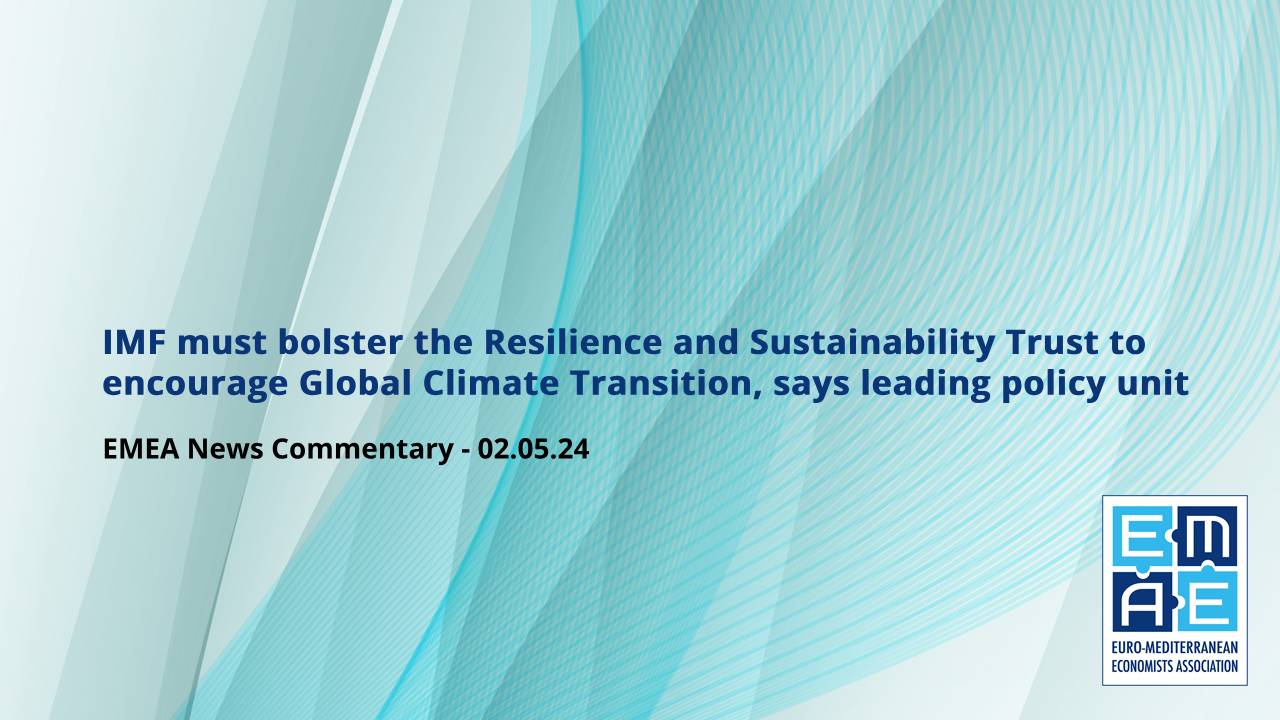The International Monetary Fund (IMF) has been given a timely nudge that it needs to show greater leadership in the transition to a low-carbon and resilient global economy – given that it stands alone as the multilateral, rules-based institution responsible for promoting macroeconomic and financial stability.
That was the central theme of a policy brief, prepared by the Task Force on Climate, Development and the IMF, under the auspices of the respected Boston University Global Development Policy (GDP) Centre.
The Task Force comprised a worldwide consortium of experts, who used rigorous, empirical research “to advance a development-centred approach to climate change at the IMF.”
The report found that the IMF needed to play a more assertive role on climate change and development in three key areas:
Firstly, multilateral surveillance activities had adopted a “one-size-fits-all” approach, with carbon pricing becoming the “panacea for climate action.”
Secondly, bilateral surveillance activities had underestimated “the macroeconomic implications of financing climate transitions in a financially stable manner.” The Task Force said that the IMF’s work needed “to reflect the full range of climate risks confronting countries and foster greater understanding of the economic and financial implications of climate change.”
Thirdly, the IMF lending apparatus lacked “appropriate scale.” They had “overemphasised short-term fiscal consolidation over long-run resource mobilisation.”
The Task Force said IMF surveillance and lending “must help member states make the proper investments towards low-carbon, carbon resilience and socially inclusive growth paths.” And they advanced a series of concrete policy improvements covering the IMF’s toolkit:
- Broaden multilateral surveillance activities that strengthened focus on an investment-led approach to a resilient and just transition.
- Bolster bilateral surveillance through the deployment of better analytical tools for analysing climate risks and their macro-critical impacts and support capacity building in developing countries.
- Scale and reform of the toolkit, in line with the Paris Agreement on climate change. This should include refining the Resilience and Sustainability Facility (RSF) aligning short and longer-term financing horizons, without jeopardising debt sustainability and growth prospects.
Although the Task Force accepted that the IMF had “made strides in mainstreaming climate change into its operations,” progress to date “does not match the urgency of the moment.”
Nor had there been “a full alignment with the varied development needs of member states, particularly emerging market and developing economies.”
Boosting the role of Resilience and Sustainability Trust (RST)
They also produced a five-point plan surrounding the future design of Resilience and Sustainability Trust (RST) loans “to ensure they adapt to the specific and unique circumstances of the IMF membership and the urgent need to address the climate crisis.”
The purpose of the RST was to provide longer-term, concessional financing to low-income countries, small developing states and vulnerable middle-income countries.
The briefing paper noted that developing countries needed “considerable capital investments to accelerate the shift to low-carbon economies, enhance resilience to climate shocks, address loss and damage, restore biodiversity loss and navigate the cross-border spillovers associated with the global climate transition.”
Estimated external financing needs of around $1 trillion per year by 2030 were, however, “well beyond the restricted fiscal capacities of many developing countries, especially those with high and rising debt that further constrains their borrowing space and debt sustainability prospects.”
International cooperation was “essential to help these countries urgently unlock and mobilise substantial and affordable financing to achieve a just, global climate transition.”
Whilst the number of RST programmes had grown to 18 by the end of March 2024, the Task Force policy briefing said that this was “well below the average of 33 active RSF programme a year that the IMF had initially estimated.” What’s more, the focus of the programmes had been exclusively on climate change and the IMF Executive Board hadn’t approved that dealt with pandemic preparedness.
The key question, the briefing continued, was how the RST would address balance of payments support for climate shocks and green transitions, in order to foster resilient and sustainable growth over the medium-term. This was where there was a major gap in the global financial architecture, the briefing pinpointed.
Greater IMF leadership needed in five key areas
The policy brief drew on the experiences of accessing concessional RST financing for three climate vulnerable countries – Bangladesh (a developing country) and Barbados and Jamaica (two emerging market economies). Each had been amongst the first financial beneficiaries of the programme, via the Resilience and Sustainability Facility (RSF).
It identified five areas where the IMF could demonstrate greater leadership to strengthen the RST, ensuring that it aligned with a more development-centred approach to climate change:
- expanding resources
- eliminating concurrent programmes as a key requirement
- aligning RST programme design with ambitious climate and development polices
- emphasising a focus on catalysing finance for maximum impact
- institutionalising collaboration with the World Bank
Current RST capitalisation, channelled from G20 nations, stood at $40 billion, with useable resources of around $25 billion, due to built-in buffers.
The Fund’s reserve asset would be vital in the next five years, “given both the demand of the RST and the unprecedented scale of financing need to meet shared development and climate change goals.” Replenishment would also need to come through re-channelled Special Drawing Rights (SDRs).
But the Task Force said that the RST’s financial firepower alone would not be sufficient. Human resources were also needed to ensure the programme was best supported and executed.
Current qualification restricting access to RST
The policy briefing noted that the existing qualifying requirements for countries wanting financing had restricted members’ access to the RST. It also reduced the overall effectiveness in the push to re-channel SDRs.
“Going forward, it is essential for the IMF to remove the requirement to have a concurrent Fund programme,” was the Task Force advice.
Their analysis had shown that Barbados and Jamaica had faced a substantial increase in their conditionalities. The conditions in IMF RSF reforms were mainly “low-depth reforms.” But these hadn’t brought about meaningful change. Instead, they had encouraged more critical reforms, which meant “that RSF arrangements are not tackling longer-term structural reforms, despite these countries having ambitious nationally determined contributions and adaptation strategies.”
For future RSF designs, especially for highly indebted climate-vulnerable countries, the IMF “should consider deploying more RST resources to create fiscal space for climate action through debt relief solutions that are timely, fair and effective.”
In general, it was crucial that countries had access to affordable and accessible liquidity support arrangements, to help them manage short-term shocks. And low-cost financing options were now vital, to counter the high cost of borrowing currently faced by emerging market and developing economies.
To tackle this, the G20 should issue “a new round of SDRs to help countries cope with liquidity challenges and increase the supply of concessional finance,” the briefing recommended.
Question marks over the catalytic nature of RSF
RSF arrangements had “an overwhelming reliance” on the IMF’s catalytic effect to unlock external financing for investments in climate mitigation and adaptation.”
The experiences of the initial RSF country recipients had demonstrated “that the signalling effect of climate policy reforms to spur large-scale private climate investments faces strong headwinds.”
In the case of Barbados and Jamaica, by the end of 2023, neither country had attracted any private climate finance flows. This was despite them having an RSF arrangement in place for 12 months and nine months, respectively. Bangladesh had only received “a marginal amount of private climate financing.”
The policy brief said the IMF should ensure that RSF arrangements played “a much stronger catalytic role in mobilising private climate finance through a focus on a few ambitious, high-depth policy reforms that stand a reasonable prospect of successfully generating transformational change or having a long-lasting impact.”
One potential knock-on effect of “this shift” could be that private sectors would start to become engaged.
Collaborating roles for the World Bank and MDBs
The IMF would need to engage the services of the World Bank and other regional multilateral development banks (MDBs) to achieve catalytic structural conditions, they continued.
The “deep sectoral expertise” of the World Bank could provide “the analytical foundations to design material RSF policy reforms.” The policy briefing stated that the IMF “should institutionalise its climate collaboration with the World Bank,” adding that working closer together “could also help increase the catalytic impact of the RST.”
The policy brief concluded: “The IMF must show faster and bolder leadership to make the RST an important, transformational part of the global financial architecture.”





